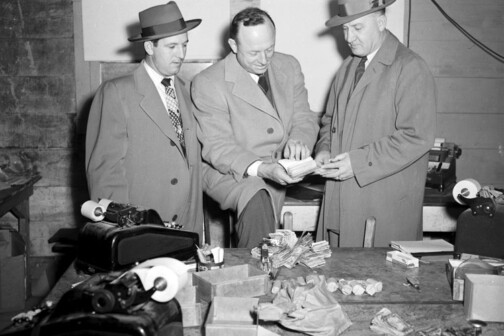Open Wide
If you haven’t been to a dentist’s office in a while (you know who you are), you might not recognize one. Today, going to the dentist can be as pleasant and relaxing as a trip to the spa, with massage therapy, microdermabrasion, aromatherapy, Feng Shui waiting rooms, security blankets, movies, refreshments, and more. The Dallas Dental Spa even has reduced guest rates at Hotel Crescent Court and Hotel ZaZa for out-of-town patients.
Fancy offices and amenities help lure patients into dentists’ chairs, but mostly it’s the pursuit of the perfect smile. Your teeth are flossed, glossed, massaged, and whitened, and if you don’t like the looks of your smile, you can change it as easily as pointing at a picture, choosing the shape and length you want for each tooth from the Lorin Library Smile Style Guide.
The Lorin Library Smile Style Guide is the creation of Dr. Lorin Berland, a dentist known among peers as the Louis Armstrong of teeth because he plays jazz in his office. Berland is not just a family dentist who fills cavities, bonds teeth, and whitens and brightens smiles. Calling himself a pioneer in cosmetic dentistry, Berland has positioned himself as a teacher for other dentists who want to learn his cosmetic and marketing techniques so they, too, can create Smile Libraries (and spas?) for their own patients.
The popularity of cosmetic dentistry has skyrocketed in the past few years, but so has the discord between old-school dentists who work on crowns, fillings, root canals, and the like, and more progressive dentists who concentrate on such things as teeth whitening and veneers. In fact, when we took a poll of dentists in the area to compile a list of the top dentists in town, including the best cosmetic dentists (see p. 113), many of the respondents insisted that such a specialization didn’t exist and that we would be foolish to include it. But cosmetic dentists argue that they’re giving people what they want and that they’re making the most of available technology.
Which group is right? Well, they both are.
As of now, cosmetic dentistry is not one of the eight classic board specialties recognized by the American Dental Association that require two or more years of post-doctoral residency training. Some cosmetic dentists think that is rather archaic. Tired of the ADA holding them back, many have created their own associations to help them focus on and improve cosmetic dental techniques through weekend seminars and continuing education. One of the more prominent is the Madison, Wisconsin-based American Academy of Cosmetic Dentistry (AACD). Last year 1,000 dentists joined the 5,295-strong AACD, according to Eric Nelson, director of public relations. (For comparison, there are more than 9,900 dentists in Texas.)
Accredited AACD members have passed thorough exams, attended workshops, and presented clinical case studies, says Southlake dentist Dr. Greg Wright, himself an accredited member and examiner. He thinks part of the problem with cosmetic dentistry today is that consumers may have trouble discerning who is a cosmetic dentist because the ADA doesn’t regulate cosmetic dentistry. There is no way for someone to distinguish himself as a cosmetic dentist, Wright says, except by membership in the AACD or a similar organization.
The growing number of cosmetic dentists mirrors an increase in the call for cosmetic treatments. Cosmetic dentistry is the fastest-growing area of dental concentration. Since 1996, demand for cosmetic dental procedures is up 200 percent. Still, old-school dentists believe that cosmetic dentistry is not a dental specialty at all, because most dentists are trained to do some cosmetic work in a general dentistry practice. Some even say that calling themselves cosmetic specialists jeopardizes their state license.
So, yes, your family dentist can bleach your teeth, apply veneers, and affix basic porcelain crowns just as well as he or she can fill cavities. On the other hand, some cosmetic dentists offer “quicker” treatments with “faster” results. But with jackpot fees ranging from $900 to $4,500 per tooth, are some dentists encouraging services that you don’t need?
Bleaching, says Dr. Charles W. Wakefield, professor and director of the Advanced Education in General Dentistry Residency Program at Baylor College of Dentistry, is one thing. But when you get into irreversible procedures such as veneers and crowns, which alter tooth structure in minor or major ways, patients need to know what they are getting into—a lifetime of care or total replacement in the future. Crowns and caps, for example, have a life span of approximately 15 years. In dentistry, as in medicine, this is called “informed consent.” Even when considering veneers, Wakefield and other dentists warn, make sure the procedure is necessary. And have a clear idea of what can go wrong.
Some dentists say the preoccupation with perfect teeth is consumer-driven. We all want pretty smiles. In an AACD survey, 92 percent of respondents said they believe a great smile is a vital social asset; 88 percent said an unattractive smile can make you less appealing to members of the opposite sex. Riding the coattails of increased interest—some would say obsession—in celebrities and plastic surgery, even those with teeth that function perfectly are asking their dentists for brighter smiles every time they recline in the dental chair.
Demand for teeth whitening or bleaching is up nationally by 300 percent from five years ago, and whitening is now the most frequently requested cosmetic dental procedure in patients 50 years old and younger. As we age, new dentin forms inside the tooth as the nerve becomes smaller. This results in yellow teeth. Dentists say bleaching is harmless, but that depends on how you get the job done.
Wakefield suggests using the weakest chemical concentration recommended by the ADA. He also says there is no scientific evidence that shining a laser on bleaching chemicals make them work better. Patients may think they’re getting a speedier job with the laser, but the dentist is actually coating the teeth with a higher concentration of hydrogen peroxide—3.5 to 7 percent in the take-home kits, 35 to 40 percent in the office-applied solution. The stronger the chemical, Wakefield says, the higher the risk of side effects, such as sensitive gums or teeth.
Of course, color isn’t the only patient concern. If genetics or misfortune bestowed on you an imperfect set of choppers, there are other conservative options to consider before more invasive treatment. Chips can be filed and filled with composite resins, which match the natural tooth color. Sharply pointed teeth that resemble a German shepherd’s can be rounded, a procedure popular with pastors and clergymen, who are some of the biggest consumers of cosmetic dentistry. Dr. Daniel Strader points out, “Who wants to hear about God from someone with Dracula-like teeth?”
Ceramic veneers are a more invasive step. Often compared to fake fingernails, veneers consist of a strong coating that is placed on the front of the tooth. It’s a more involved and expensive treatment—about $1,200 to $2,000 per tooth—because the natural tooth has to be filed down to accommodate the veneer, and size, proportion, and color have to match the natural tooth perfectly.
Veneer restorations require surgical precision, says Preston Center prosthodontist Dr. Greg Seal. From the patient’s mouth impressions, the dentist makes an individual mold of each tooth and adds porcelain in small droplets using a brush, like an artist painting a canvas. The porcelain is fired in a furnace, shaped, and polished. The process takes several hours per tooth. The biggest challenge, dentists say, is not the patient who wants a full set, but the one restoring just one tooth. It takes 25 to 30 shades of porcelain to match the enamel of a natural tooth.
While veneers cover only the visible surface of teeth, crowns or caps cover the entire tooth. They are usually used when breakdown of the natural tooth has occurred or the natural tooth is too small. Most dentists agree that healthy teeth should not be subjected to crowns. But sometimes patients don’t like what they hear, Wakefield says, and they dentist-hop until they find someone who’ll do crowns when what the patient really needs is orthodontic work. The bottom line is that a beautiful smile begins with a healthy mouth.
Now, if we can just get the bloody British to listen.
Dallas-based writer Mary Candace Evans is a longtime contributor to D Magazine and a D Home associate editor.





